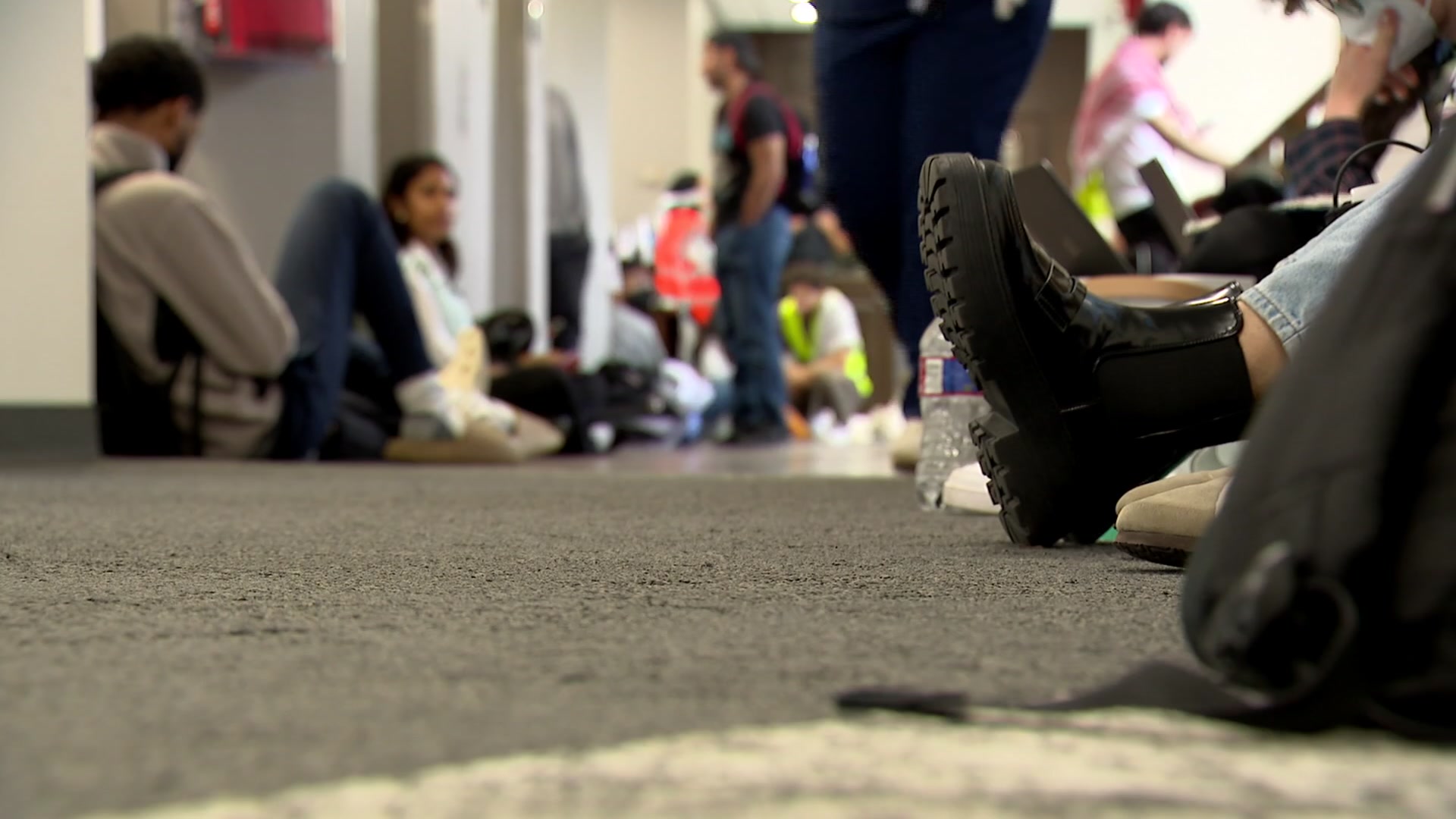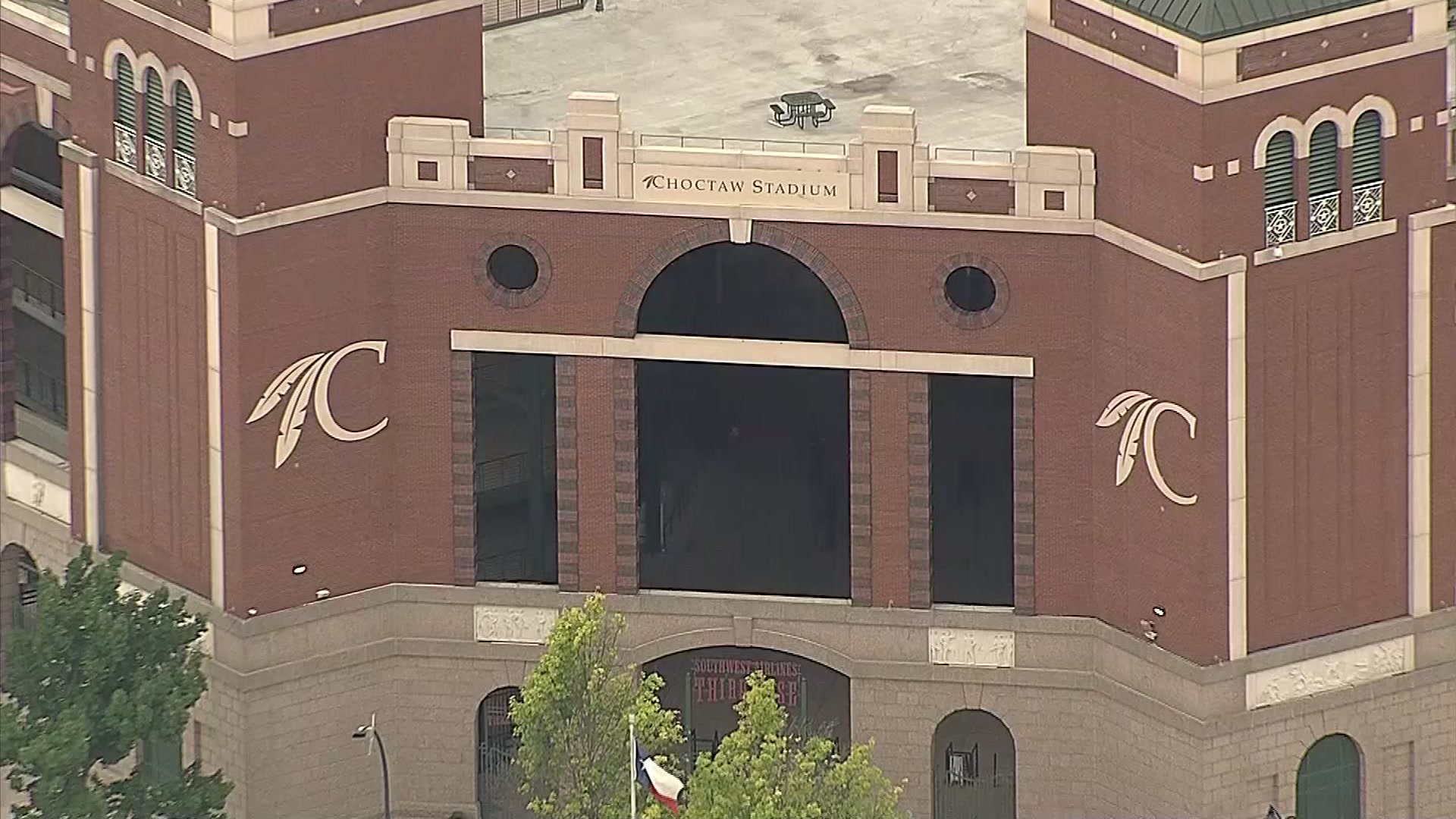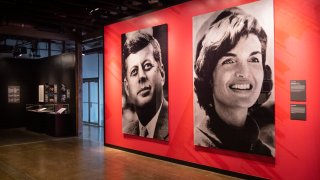
Sometimes the best history lesson is a piece of music or a painting. “Art Reframes History,” a special exhibition now on view through April 4 at The Sixth Floor Museum at Dealey Plaza in Dallas, examines how artists interpret history and the emotional impact of President John F. Kennedy’s assassination 57 years later.
The exhibition was intended to be the museum’s contribution to Dallas Arts Month in April. The art in the exhibition are part of the museum’s collection and includes Andy Warhol’s include Flash – November 22, 1963; a page from a handwritten score for One Red Rose which was composed by Steven Mackey to commemorate the 50th anniversary of the assassination; and examples of German artist Jens Lorenzen’s Mauer IV series (2015), a work partially inspired by primary sources from the museum’s collection.
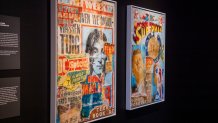
The Sixth Floor Museum closed in March because of the coronavirus pandemic. The museum reopened in September and continues to operate at 20% capacity. There is plenty of room in the museum’s special exhibition gallery on the seventh floor for visitors to contemplate the photography, paintings, and musical works inspired by the assassination and legacy of President Kennedy.
“When you look at artistic expression – whether it is visual art, performing arts, music – it’s inspired by historical events. It’s history in the world we’re living in so we thought we would make that connection,” Nicola Longford, the Sixth Floor Museum’s CEO, said.
Paul Sokal, a doctor turned professional photographer, created 21 November, a photographic triptych imagining the night before the assassination from the assassin’s perspective. Details in the photographs denote a shifting mood of the unseen assassin, concluding with a shadow of a rifle looming over the scene.
“We wanted to show that all sorts of people and artists – whether they are professional or not – grapple and are fascinated with parts of history that are not fully explained. There are mysteries attached to them,” Longford said. “Everyone reacts to history differently.”
Local
The latest news from around North Texas.
Piet Wessing has never visited Dallas but was ecstatic to learn his Conspiracy Theory #7: Dealey Plaza is part of the museum’s collection. Wessing partially obscured a series of iconic photos and video stills. Together, the series tells the story of the assassination with the hidden elements causing visitors to question what they are seeing.
“He produced this piece as a body of works dealing with conspiracy, so he has an interest in conspiracy and paranoia. He’s looking at his works of art with a historical reference through paintings and photographs to accentuate those aspects of what provokes and incites conspiracy in our world,” Longford said.
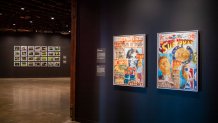
The exhibition highlights the work of five musicians commissioned to commemorate the assassinated president. MASS, a dramatic choral piece by Leonard Bernstein and Stephen Schwartz, echoed the trauma experienced by the generation who witnessed the assassination and the societal chaos that followed.
Jackie Kennedy Onassis commissioned the piece for the inauguration of the Kennedy Center for the Performing Arts in 1971. Bernstein’s grief is expressed in the piece as a crisis of faith. “I think Leonard Bernstein was definitely grieving. I think he still felt his death acutely. I think MASS is reflective of the turbulence of that time period and into the 70s as well. It was certainly not a standard work. It was completely out-of-the-box, different, highly controversial. A lot of people don’t like it and don’t get it,” Longford said, “The topics and themes behind Mass are still relevant.”
This exhibition shows how music can unite generations in understanding history. The Sixth Floor Museum commissioned Jesus Martinez to create two pieces in 2019. The Sixth Floor was performed by The Julius Quartet in honor of the museum’s thirtieth anniversary. Three Hours in Dallas was performed by Sam Houston High School Percussion Ensemble at the museum. The music accompanied a film created by the museum of home movies and news footage from November 22, 1963.
Students gained insight into the emotional context of the historical event. “We really want to open up our doors and our materials and invite the community in to find whatever they want to make their own meaning to create their own music or art or plays,” Longford said.
American pop culture and history inspired Alexander Guofeng Cao’s JFK vs Jackie and Jackie vs JFK. The two oversized portraits of the presidential couple are deceptive. A portrait of President Kennedy is made up of tiny photos of his wife. The portrait of Jackie Kennedy Onassis is composed of miniature photos of the president. Although separated by death at a young age, they are interconnected by history for eternity. For Cao, the couple embodied the American spirit, an era of hope after decades of darkness and war.
Cao was born after the assassination and was so impressed by the Sixth Floor Museum, he donated JFK vs Jackie and Jackie vs JFK to the museum. “It just exhilarating when you see younger people find their own discovery in this story. They know those iconic images. They know a little, but they don’t know whole history, the deep history behind it,” Longford said. “There’s lots to there to find. We can look back to the past and find hope for the future.”
Learn more: JFK.org

